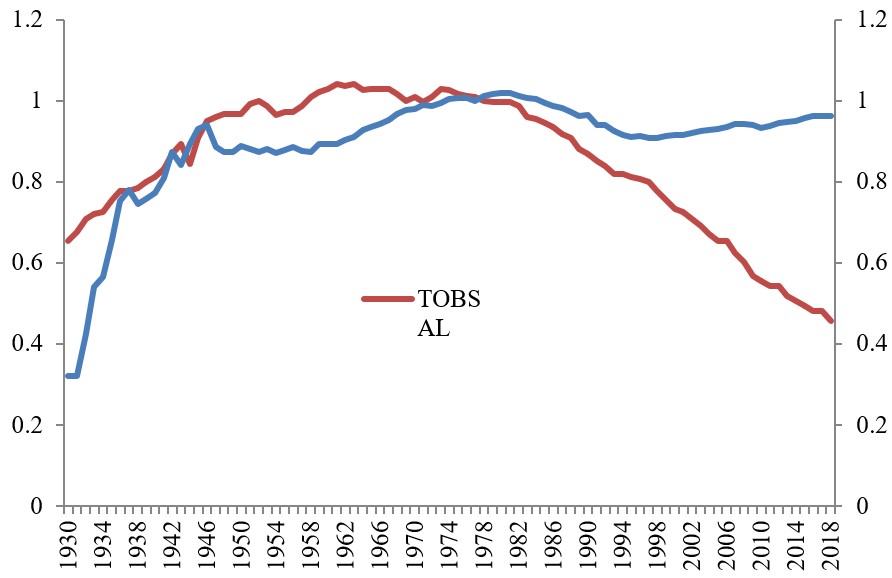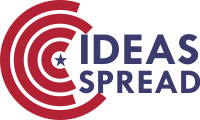Identifying the Temporal Causal Relationship Between Alcohol and Tobacco Consumption with Aggregate Cancer Mortality over Alternative Time Horizons
Abstract
Identifying the causal role of tobacco and alcohol has long been acknowledged as a critical area for developing preventative strategies in particular and public policy in general. This study utilizes a unique time series method in an effort to determine the strength of causal relationships between tobacco consumption, alcohol consumption and cancer mortality. By analysing tobacco expenditure, alcohol expenditure, while controlling for health expenditures and aggregate cancer data observed annually over an 80-year period fin the US population, we consider the relevant factors explaining and potentially guiding public health concerns going forward. Our results found that while tobacco and alcohol consumption (individually) causally impact cancer mortality, alcohol consumption maintains a stronger, bidirectional impact in comparison to tobacco consumption. From this, we consider explanations from an economic, biological and epidemiological front, gauging the strength of alcohol consumption on societal wellbeing. We find alcohol consumption to be a notable causal factor in cancer mortality that has been neglected from a public policy perspective in comparison to its more mediated tobacco counterpart.
References
Bagnardi, V., Blangiardo, M., La Vecchia, C., & Corrao, G. (2001). Alcohol consumption and the risk of cancer: A meta-analysis. Alcohol Research and Health, 25(4), 263-270. Retrieved from https://pubmed.ncbi.nlm.nih.gov/11910703/
de Menezes, R. F., Bergmann, A., & Thuler, L. C. S. (n.d.). Alcohol consumption and risk of cancer: A systematic literature review. Asian Pacific Journal of Cancer Prevention, 14(9), 4965–4972. https://doi.org/10.7314/apjcp.2013.14.9.4965
Desrichard, A., Kuo, F., Chowell, D., Lee, K.-W., Riaz, N., Wong, R. J., Chan, T. A., & Morris, L. G. T. (2018). Tobacco Smoking-Associated Alterations in the Immune Microenvironment of Squamous Cell Carcinomas. Journal of the National Cancer Institute, 110(12), 1386-1392. https://doi.org/10.1093/jnci/djy060
Dickey, D. A., & Fuller W. A. (1979), Distribution of the estimators for autoregressive time-series with a unit root, Journal of the American Statistical Association, 74, 427-431. https://doi.org/10.2307/2286348
Dickey, D. A., & Fuller W. A. (1981), Likelihood ratio statistics for autoregressive time series with a unit root, Econometrica, 49, 1057-1072. https://doi.org/10.2307/1912517
Editorial Staff. (2020). Rules & Regulations About Marketing Alcohol. American Addiction Centers. Retrieved from https://www.alcohol.org/laws/marketing-to-the-public/
Engle, R. F., & Granger, C. W. J. (1987). Cointegration and error correction: Representation, estimation, and testing. Econometrica, 55, 251-276. https://doi.org/10.2307/1913236
Gandini, S., Edoardo, B., Simona, I., Mathieu, B., Lowenfels, A. B., Patrick, M., & Peter, B. (2008). Tobacco Smoking and Cancer: A Meta-Analysis. International Journal of Cancer, 122(1), 155-164. https://doi.org/10.1002/ijc.23033
Granger, C. W. J. (1988), Some recent developments in a concept of causality, Journal of Econometrics, 39, 199-211. https://doi.org/10.1016/0304-4076(88)90045-0
IARC Working Group on the Evaluation of Carcinogenic Risks to Humans., & International Agency for Research on Cancer. (2010). Alcohol consumption and ethyl carbamate / IARC Working Group on the Evaluation of Carcinogenic Risks to Humans. ix. Retrieved from https://www.ncbi.nlm.nih.gov/books/NBK326568/
Jiang, H., Livingston, M., Room, R., Chenhall, R., & English, D. R. (2018). Temporal Associations of Alcohol and Tobacco Consumption With Cancer Mortality. JAMA Network Open, 1(3). https://doi.org/10.1001/jamanetworkopen.2018.0713
Johansen, S. (1988). Statistical analysis of cointegration vectors. Journal of Economic Dynamics and Control, 12, 231-254. https://doi.org/10.1016/0165-1889(88)90041-3
Johansen, S., & Juselius, K. (1990). Maximum likelihood estimation and inference on cointegration with applications to money demand. Oxford Bulletin of Economics and Statistics, 52, 169-210. https://doi.org/10.1111/j.1468-0084.1990.mp52002003.x
Kalodner, C. R., Delucia, J. L., & Ursprung, A. W. (1989), An examination of the tension reduction hypothesis: The relationship between anxiety and alcohol in college students, Addictive Behaviors, 14(6), 649-654. https://doi.org/10.1016/0306-4603(89)90007-5
Kirpalani, P. (2017). Alcohol & Cancer. Mimeo, University of North Carolina. Retrieved from http://www.researchgate.net/publication/321225698
Kwiatkowski, D., Phillips, P. C. B., Schmidt, P., & Shin, Y. (1992). Testing the null hypothesis of stationarity against the alternative of a unit root. Journal of Econometrics, 54(1-3), 159-178. https://doi.org/10.1016/0304-4076(92)90104-Y
Korsten, M. A., Matsuzaki, S., Feinman, L., & Lieber, C. S. (1975). High Blood Acetaldehyde Levels after Ethanol Administration - Difference between Alcoholic and Nonalcoholic Subjects. New England Journal of Medicine, 292(8), 386-389. https://doi.org/10.1056/NEJM197502202920802
Kwo, P. Y., Ramchandani, V. A., O’Connor, S., et al. (1998). Gender differences in alcohol metabolism: Relationship to liver volume and effect of adjusting for body mass. Gastroenterology, 115, 1552-1557. https://doi.org/0.1016/s0016-5085(98)70035-6
National Cancer Institute. (2017). Tobacco. National Institute of Health. Retrieved from https://www.cancer.gov/about-cancer/causes-prevention/risk/tobacco
National Institute on Alcohol Abuse and Alcoholism. (2007). National Alcohol Metabolism: An Update, U.S. Department of Health and Human Services, 72. https://pubs.niaaa.nih.gov/publications/aa72/aa72.htm
Nelson, C. R., & Plosser, C. (1982). Trends and random walks in macroeconomic time series, Journal of Monetary Economics, 10, 129-62. https://doi.org/10.1016/j.jmacro.2011.10.001
Paton, A. (2005). Alcohol in the Body. The BMJ. 330(7482), 85-87. https://doi.org/10.1136/bmj.330.7482.85
Perron, P. (1988). Trends and random walks in macroeconomic time series, Journal of Economic Dynamics and Control, 12, 297-332. https://doi.org/10.1016/0165-1889(88)90043-7
Peterson, L. A., Balbo, S., Fujioka, N., Hatsukami, D. K., … Villalta, P. W. (2020). Applying tobacco, environmental and dietary-related biomarkers to understand cancer etiology and evaluate prevention strategies. Cancer Epidemiology, Biomarkers & Prevention : A Publication of the American Association for Cancer Research, Cosponsored by the American Society of Preventive Oncology. https://doi.org/10.1158/1055-9965.EPI-19-1356
Phillips, P. C. B., & Perron P. (1988). Testing for a unit root in time series regression, Biometrika, 75, 335-346. https://doi.org/10.2307/2336182
Seeman, J., Dixon, M., & Haussman, H. (2002). Acetaldehyde in mainstream tobacco smoke: formation and occurrence in smoke and bioavailability in the smoker. Chemical Research in Toxicology, 15(11), 1331-1350. https://doi.org/10.1021/tx020069f
Seitz, H. K., & Becker, P. (2007). Alcohol Metabolism and Cancer Risk. Alcohol Research & Health, 30(1), 38-47. Retrieved from https://pubmed.ncbi.nlm.nih.gov/17718399/
Simonton, O. C., & Matthews-Simonton S. (1981). Cancer and Stress Cousnelling the Cancer Patient. The Medical Journal of Australia, 1(13), 679-683. Retrieved from https://pubmed.ncbi.nlm.nih.gov/7278751/
Thun, M. J., Peto, R., Lopez, A. D., Monaco, J. H., Henley, S. J., Heath, C. W., & Doll, R. (1997). Alcohol Consumption and Mortality among Middle-Aged and Elderly U.S. Adults. The New England Journal of Medicine, 337(24). https://doi.org/10.1056/NEJM199712113372401
World Health Organization. (2018). Cancer. World Health Organization. Retrieved from https://www.who.int/news-room/fact-sheets/detail/cancer


This work is licensed under a Creative Commons Attribution 4.0 International License.
Copyright for this article is retained by the author(s), with first publication rights granted to the journal.
This is an open-access article distributed under the terms and conditions of the Creative Commons Attribution license (http://creativecommons.org/licenses/by/4.0/).








1.png)














